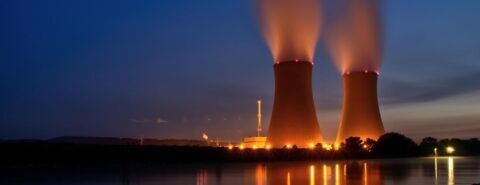Rethinking nuclear

As someone who has spent decades studying the evolution of nuclear energy, I’ve seen its emergence as a promising transformative technology, its stagnation as a consequence of dramatic accidents and its current re-emergence as a potential solution to the challenges of global warming.
While the issues of global warming and sustainable energy strategies are among the most consequential in today’s society, it is difficult to find objective sources that elucidate these topics. Discourse on this subject is often positioned at one or another polemical extreme. Further complicating the flow of objective information is the involvement of advocates of vested interests as seen in the lobbying efforts of the coal, gas and oil industries. My goal has been to present nuclear energy’s potential role in a sustainable energy future—alongside renewables like wind and solar—without ideological baggage.
An additional hurdle that must be overcome in dealing with the pros and cons of nuclear energy is the psychological context in which fear of nuclear weapons and of radiation impedes rational analysis. The deep antipathy to nuclear phenomena is illustrated by what might be called the “Godzilla Complex” that developed after the crew of the Japanese fishing boat, the Lucky Dragon 5, was exposed to heavy radiation from a nuclear weapons test in 1954. Godzilla was conceived as a monster that emerged from the depths of the ocean due to radiation exposure. It has become an enduring concept that has been portrayed in nearly forty films in the United States and Japan and in numerous video games, novels, comic books and television shows.
It is not surprising that fear of nuclear reactor radiation has been widespread. In spite of the fact that there are no documented deaths due to nuclear reactor waste (in contrast to deaths from accidents), it is widely assumed that nuclear reactor waste is quite dangerous. In contrast, the fact that premature deaths attributable to the fossil-fuel component of air pollution worldwide exceeds more than 5 million annually generates little concern. Similarly, the total waste produced from nuclear energy can be stored on one acre in a building 50 feet high, whereas for every tonne of coal that is mined, 880 pounds of waste material remain. Furthermore, this waste contains toxic components. Yet public concern for nuclear waste clearly overshadows that for coal, despite these contrasting impacts.
After an in-depth review of the most significant nuclear accidents and recognition of the deep psychological antipathy to nuclear energy, I’ve become increasingly interested in the emergence of an international effort to develop safe, cost-effective nuclear energy known as the Generation IV Nuclear Initiative. This began in 2000 with nine participating countries and has since grown substantially.
In the early years, the Generation IV Nuclear Initiative took a systematic approach to identify reactor designs that could meet demanding criteria—including the key characteristic of being “fail safe”. Rather than depending upon add-on safety apparatus, “fail safe” designs rely on the laws of nature—such as gravity and fluid flow—to provide cooling in the event that the reactor overheats. Another high priority design feature is modular construction, allowing multiple units to be constructed in a timely and economical fashion.
After reviewing dozens of options, the Generation IV Nuclear Initiative settled on six designs that it found to be the most attainable and desirable. Since its initial efforts, countries that have embraced the goals of the Generation IV Nuclear Initiative have been pursuing additional designs including reactors that range in size from quite small to about one third the size of the typical one megawatt reactor.
In my book, I’ve focused my attention on four promising designs. These four designs eschew the vulnerabilities of using water as a coolant that proved so devastating at Chernobyl and Fukushima. The explosion at Chernobyl was due to steam and the three explosions at Fukushima were due to hydrogen gas that resulted from oxidation of fuel rods by overheated water. These were not nuclear explosions. Instead, the four designs I’ve highlighted use liquid sodium, liquid lead, molten salts and helium gas as coolants. Liquid sodium and liquid lead cooled reactors are operating successfully in Russia, while China incorporated a gas cooled reactor into its grid in 2023. In the United States, Kairos Power is constructing a molten salt cooled reactor, while the TerraPower company (founded by Bill Gates) has broken ground on construction of a sodium cooled reactor in Kemmerer, Wyoming. These are intended to be models for replacing coal fired power plants with Generation IV nuclear plants. Multiple implementations of this approach are planned through the early 2030s.
Given the world-wide interest in Generation IV reactor development and the many initiatives that are being pursued, it is likely that at least some of these projects will come to fruition in the near future. While success is not guaranteed, there is clearly a need for the general public and students to be kept informed of progress leading up to 2030 and beyond.
To help bridge the knowledge gap in this rapidly evolving domain, I’ve launched a newsletter on Substack called “Nuclear Tomorrow.” It’s written for anyone concerned with the intersection of public policy, energy generation, and its impact on global warming. I hope it serves as a resource for those seeking clarity in a complex and consequential field.
Feature image: nuclear power plant via Pixabay.
Oxford University Press's Blog
- Oxford University Press's profile
- 237 followers



